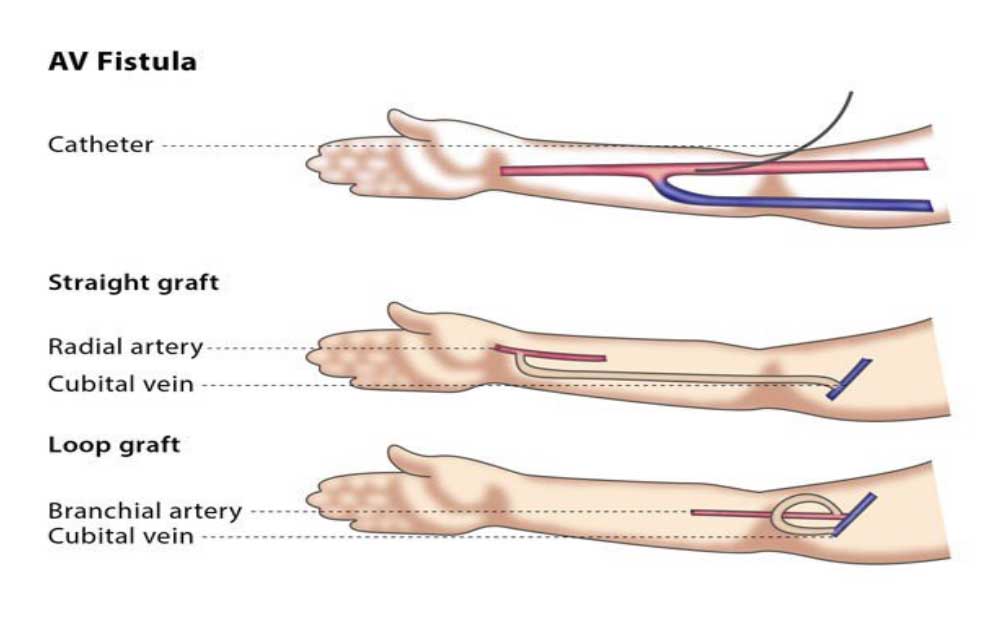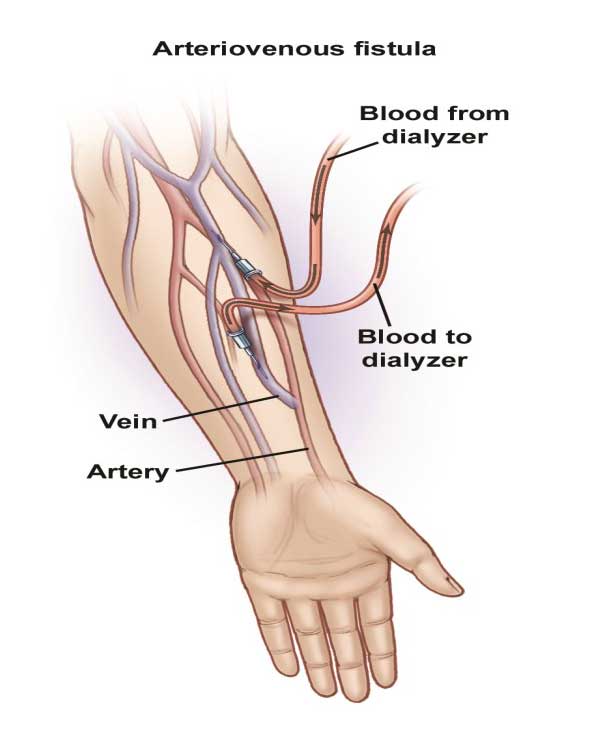AVF Creation
Home » Arterio-Venous Fistula (AVF) creation for Haemodialysis
Arterio-Venous Fistula (AVF) creation for Haemodialysis
AV fistula using autologous tissue is the preferred vascular access for permanent Haemodialysis. This involves a small operation whereby the surgeon joins together a vein to an artery in your forearm/arm. The non-dominant hand is usually preferred.
The fistula allows diversion of arterial blood into the vein which then dilates into a visible and palpable vein. This enlarged vein is then cannulated repeatedly to perform the haemodialysis. The time required for the vein to dilate enough to allow a successful dialysis can vary from 3 months to up to a year, hence it is best to have an AVF created well ahead of time if your kidney functions are declining.
AVF created in the forearm has the longest durability and is therefore preferred. If there are no suitable veins in the forearm then the fistula can be created using your veins in the arm, or by using a loop of vein harvested from your leg or by using an artificial graft. Your surgeon will discuss the best option that suits you.
Most AVF are created under local anaesthesia or a nerve block and takes about 1-2 hours to perform.
Complications
Failure: About 5%-10% of fistula will not work due to a variety of reasons, but most frequently because the chosen vein was unsuitable or unhealthy.
Stenosis: A narrowing can develop anywhere along the fistula and lead to poor dialysis or fistula failure. If this happens your dialysis team can refer you to have the narrowing stretched using a balloon or a stent. This procedure is called a Fistuloplasty.
Steal syndrome: When the fistula causes too much blood to divert away from the hand and into the fistula, this causes poor circulation to your hand. This can cause pain or a cold sensation in your fingers or it may also cause small painful ulcers/gangrene to develop on your fingertips. There are a variety of operations that can be done to fix this. Steal is more common with fistula in the arm.
Aneurysm formation: The fistula may blow out into a large aneurysm due to repeated trauma from the insertion of the needles or due to blockage of veins higher up in the arm or across the shoulder/chest wall.
Thrombosis: This is due to clot formation inside the fistula and causes failure of fistula. This will require an urgent operation to salvage, failing which you will need a new fistula created.
Post Procedure Precautions
You can usually go home the same day but you should not drive or operate machinery for the first 24hrs. You should avoid heavy lifting or carrying heavy shopping bags until you have regained feeling and full movement of your arm.
Once created you should be able to feel the fistula which will pulsate and vibrate with each heartbeat. If you do not feel this contact us as soon as possible.

